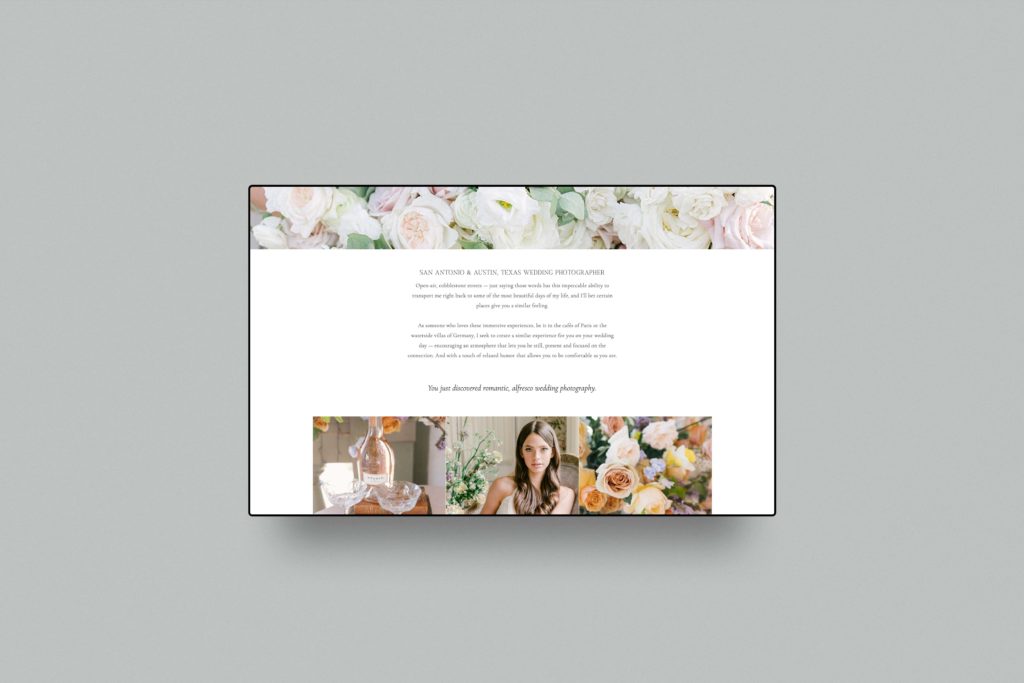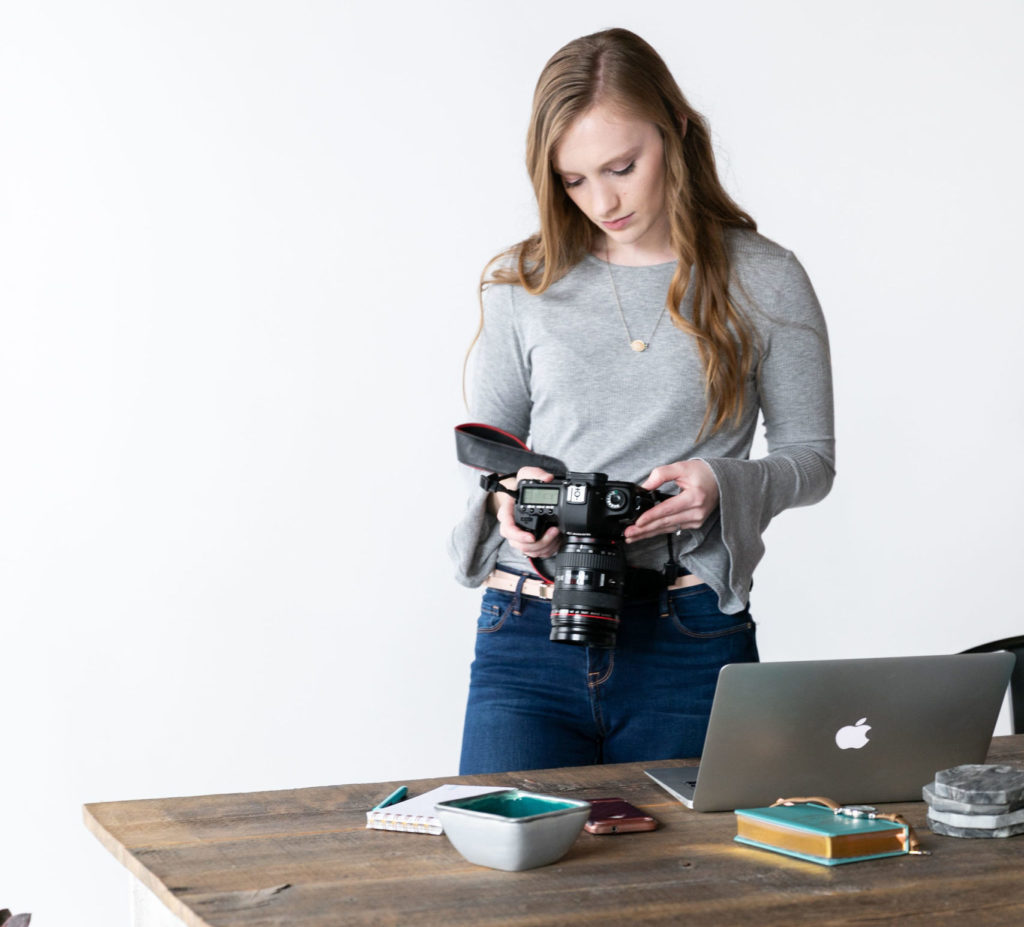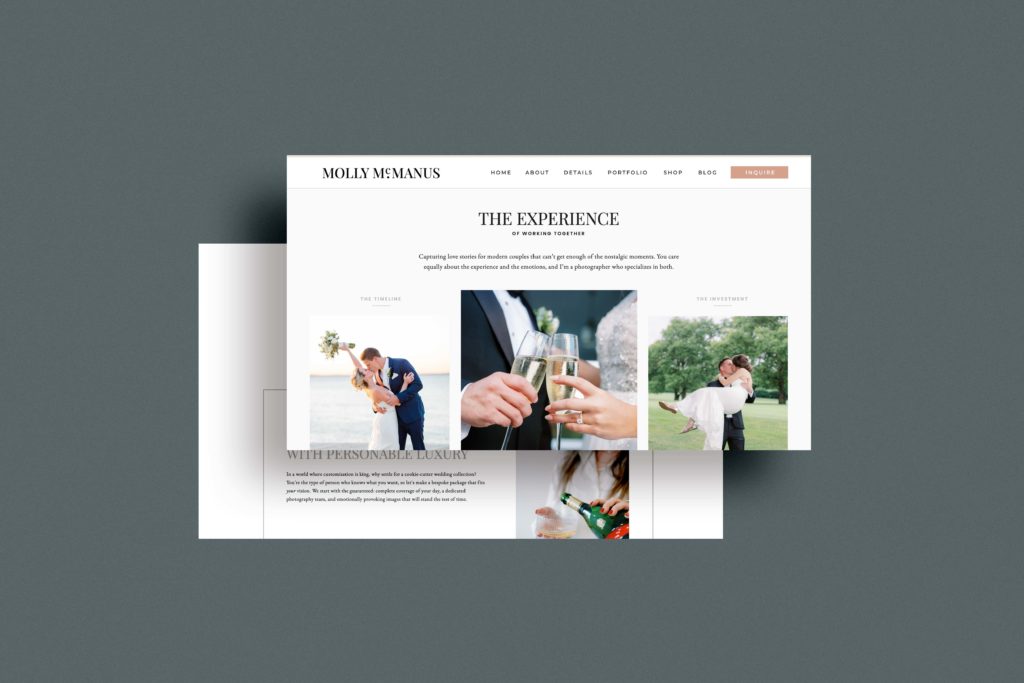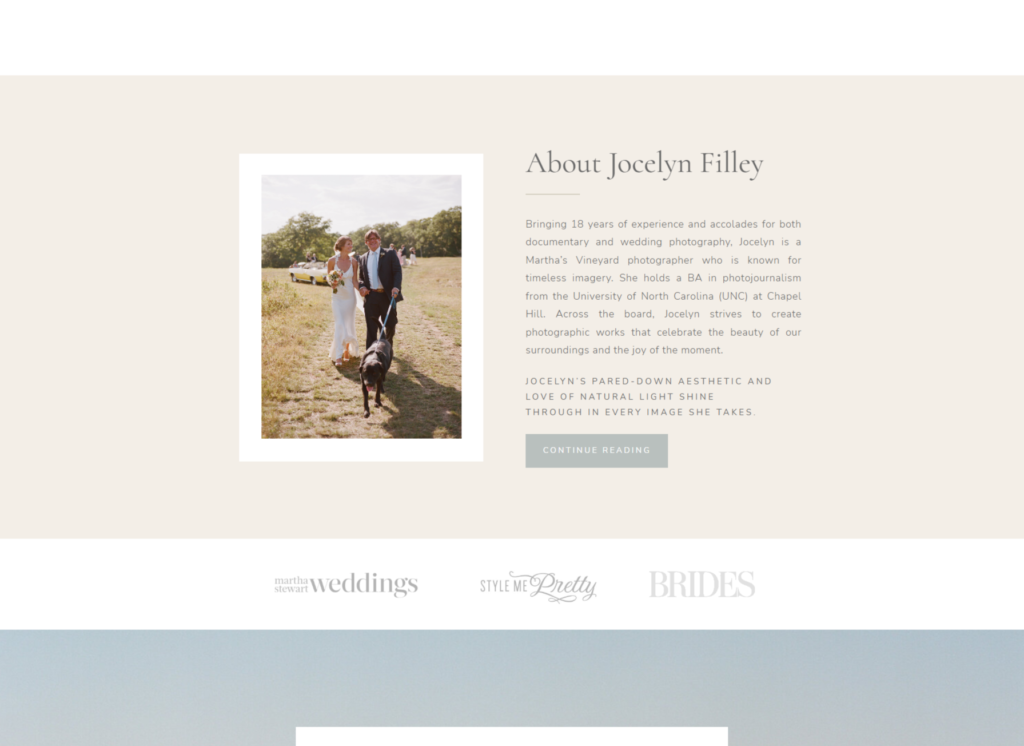Wondering if there are a few ways to make your copywriting as effective as possible? As a copywriter for photographers, I’m not holding back. Here are the copywriting tips, must-dos and things to avoid, especially in this competitive industry.
While these tips can be applied just about anywhere (brochures, proposals, canned emails), they’re most applicable to your website. After all, your photography website is often the last thing potential clients see before they contact you, or don’t. I know you’ve likely spent hours designing the site, curating the photos and ensuring that your best work is shared! You’re confident that the images on your photography website will convince potential clients to book you. However, the messaging needs to convey the client experience, your credibility and create a level of trust between you and the kind of couples who will adore you, and everything you do.
The result we’re aiming for? Clients who inquire and are ready to book, as opposed to those who are price-shopping or talking to 10 other photographers.
Let’s dive in.

1. Include at least 300 words on every page of your photography website.
This is crucial to improving your search engine rankings, but it also impacts your conversion rate as well. Your photos are beautiful, but most of your clients want to find out more information before they contact you directly. They want to know what it’s like to be photographed by you, how quick your turn-around time is, what other clients say, etc. Make it a goal to have about 300 words on each page, if not more. Use a variety of headlines, paragraph text and bullet points to split it up.
Psst. pages without 300 words usually struggle to rank on Google!
Yes, the contact page is an exception, but it’s still helpful to include your contact details, what’s next, and perhaps a few reviews too.
2. The text should be more about your client than it is about you.
This sounds difficult at first — you might be asking, “How can I make the text about the client if the website is about my services and my experience?” Well, all you have to do is write about your services with an overarching view of how it helps your clients. Here are some examples that can be used as you describe your services:
“Your wedding day should…”
“You deserve…”
“Our wedding photography revolves around…”
“I follow an approach that leads to…”
Identify what your clients want, how your photography will impact them and explain the unique aspects you offer with your photography. Hint: use more “you” and “your” than “my clients” or “my couples” and you’ll be in the right direction.
Pro tip — as you write, picture one person, your ideal client, and write the copy to them as if you were sitting across from them drinking coffee, discussing their upcoming wedding. They’re in a hurry, so you need to be personable, succinct and clear. Just as you won’t make any friends talking about yourself all the time, you won’t get any clients either.
3. Write a bio and about page that don’t sound like anyone else.
Please, do not write a bio that could have been written by a stranger. If the first line of your bio starts with, “I’ve had a camera in my hands since I was… ,” you need to start over.
(If you’re using that phrase and are looking for a quick change, update that sentence to add more of a story. One prompt we like asking is, “Who gave you that camera?”)
Answer questions like:
- What’s your mission — besides delivering photos, what is the ultimate reason for what you do?
- What’s your unique take on wedding photography? Are you a film photographer or a documentary-style photographer?
- Why are you passionate about photography?
- What drives you, client after client, to be a photographer? Is there something within the wedding or the couple that you can’t get enough of? (We hear a lot about the stories, the vision, the travel, the relationships, but the more details you add, the better it will be.)
- What are some fun facts about you? (Don’t just mention coffee. Tell them you like it black with a biscoff cookie, or skip out on the coffee note and mention the 5 islands you’ve snorkeled at.)
- What are your hobbies? (Use ones that you share in common with ideal clients.)
- Why should potential clients trust you? (Tell them how long you’ve been in business for, or feature a few reviews and publication links!)
Use a mix of photos and words to introduce yourself to potential clients. The purpose of your bio is to:
- Establish credibility and trust
- Give potential clients an opportunity to get to know the person that might be at their wedding day with them
- Stand out from the rest
- Connect with the right clients, and turn away those who aren’t
Whether you’re a commercial photographer or a wedding photographer, you are the very person that will be showing up at their event. They want to know what you’re like — are you strictly business or quirky — are you upbeat and enthusiastic or surprisingly calm under pressure? Intertwining these details throughout your website copy will allow potential clients to determine ahead of time if you’ll be a good fit. You want to attract those that will love you and repel those that won’t.
Don’t try to be something you’re not!

4. Describe the experience.
When a potential client lands on your website, chances are that your photos already got them there (and kept them interested). Or maybe a planner sent them your website. Either way, they know you are a photographer, but the real question is, “Why are you the right photographer for me, and how do you do things differently from the others?”
Failing to describe the experience means that potential clients don’t know what makes you a better photographer than the other one whose photos they were also drawn to. Use writing to describe what it’s like to work with you. Do you lead them into natural poses or capture journalistic-style candid photos? Do you have a philosophy on photography? What’s a typical photoshoot with you like? Are you laughing, creating moments, or directing and posing?
Answering that is what will have them booking you, and not your competitors (plus being approachable enough while syncing up with their vision).
Don’t forget to mention any extra, luxury offers. Do you include a photography timeline or a 48-hour sneak peek? Or do you have an in-depth preparation guide and exclusive locations set aside for engagement photos?
One exception to this is client gifts — you still want to underpromise and overdeliver. Sending that surprise gift will always be a nice cherry on top, especially if they weren’t expecting it.

5. Include a summary of package details.
You may be tempted to require an email address before you share package details. However, you’ll be turning away those who are a little more wary of submitting their email to receive information. Use a summary of your photography packages (or just one base collection) to lure potential clients in. Then you can use a pricing guide or intro call to share more precise details.
We often hear a dislike for the word, “package” so aim for “collection” instead.
As for the listed price on your website, I recommend including a “Starting at…” price point. This gives potential clients the heads up and prevents them from assuming that you’ll be more expensive than you actually are, or thinking you’re brand new and don’t even have set prices. (Yes, not including a price can lead clients to thinking you’re over budget when you’re not, or thinking that you are going to waste their time with a sales pitch on the phone.)
6. Stick to your brand.
If you’re cheesy and romantic as heck, go ahead and write your copy that way too. The last thing you want is to show up on your couple’s wedding day as a totally different person than the one they thought they booked. (And usually those situations get quite uncomfortable. I’ve heard horror stories — the kind that lead to bad reviews!)
However, if you’re not a cheeseball and have a completely different brand, be sure that your copy matches it. Don’t overthink it. Just write. And please don’t copy your neighbor, ahem, competitor. If your client visits your site and then checks out theirs, chances are they won’t book either of you because it will feel inauthentic and unethical.

7. Include client testimonials.
You’ve addressed your client directly, described the experience and laid out the package details (or a gist of your typical collection). The last thing you need to do is include some testimonials — let them do the bragging for you. It’s best to have at least three testimonials on your pricing or experience page. As an SEO website copywriter, I often sprinkle reviews on the home page, services page and sometimes on the about page too! (Don’t know the best practices for getting testimonials in the first place? If you use Dubsado, you’ll want to read this.)
A bonus note for the luxury market:
If you’re in the wedding niche and aiming to level up from mid-market weddings to high-end wedding weekends, I highly recommend:
- Avoiding words like “wedding day.” Stick with “wedding” or “experience.” After all, you’re no longer photographing just one day.
- Planners are your audience too, so make sure the copy isn’t so focused on love that you forget to talk about how you capture the vision for the planner and the couple.
Loving these photography website tips? Find more by following my team and I on Instagram!
Questions? Comment below! If you need custom copywriting for your photography website, let’s talk!
More resources from this copywriter for photographers
- Photography copywriting examples
- A high-end, modern and luxurious photography website that has this photographer working with high-end clients AND hosting workshops
- A European, destination photography website
- Website copy templates to DIY with
- The brand voice basics — what is brand messaging anyways?
- About me examples from photography websites (answering the question, “how do I write about myself?”)
- Photography mission statements & taglines to inspire you
- A case study from a photography website